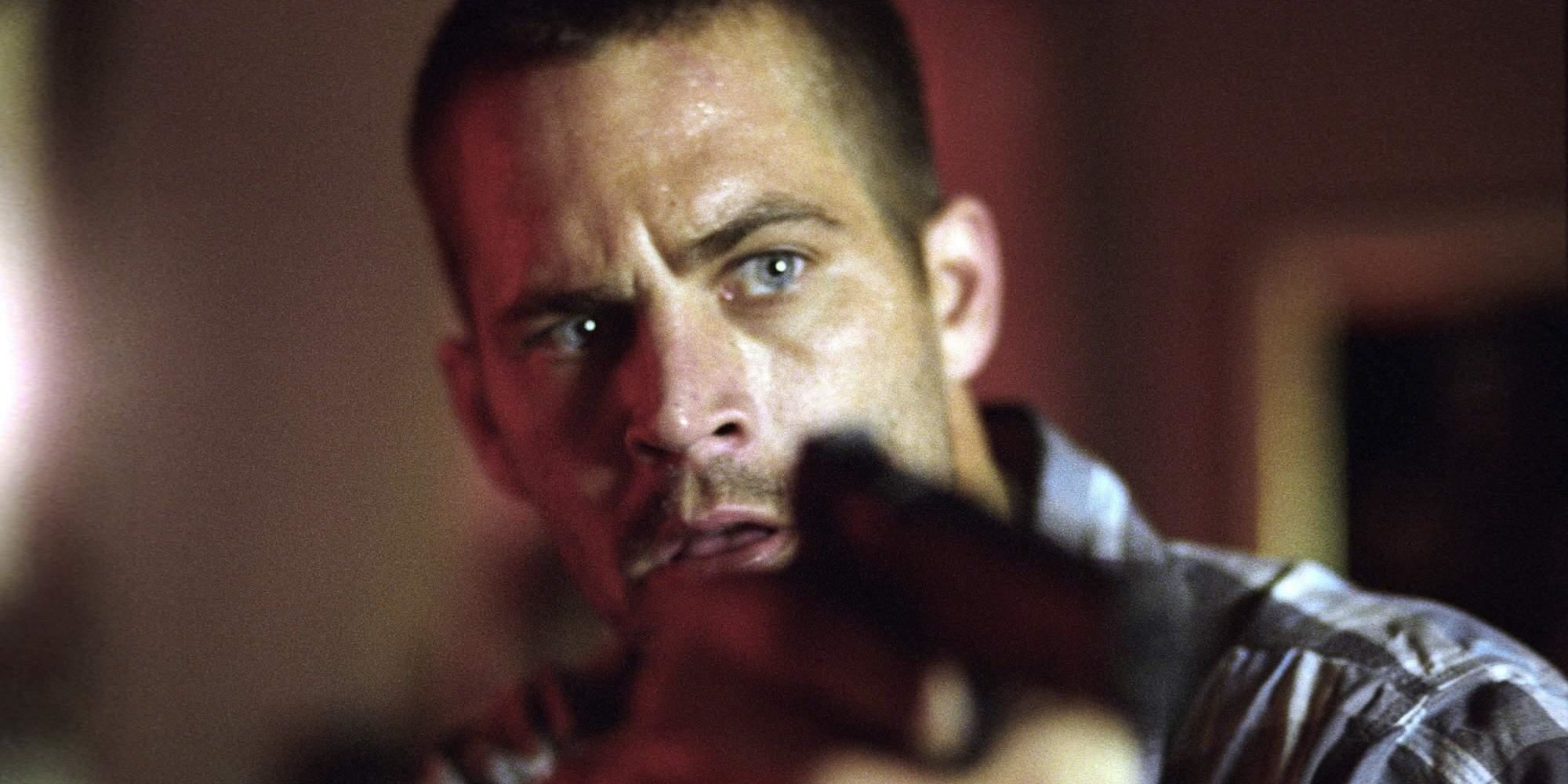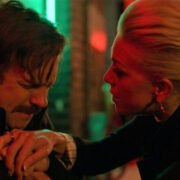A Grimm Tale: The Brilliant Over-Stimulation Of Wayne Kramer’s RUNNING SCARED

If I don’t fully ascribe to the ideas of vulgar auteurism, I at least understand the appeal. It’s exhilarating when a director goes all in on their twisted vision, creating something truly excessive, and thus it’s tempting to grant them the same artistic credit as your Samuel Fullers and Howard Hawks.
But though my feelings on individual filmmakers vary (I prize the dark gothic moods of John Carpenter and M. Night Shyamalan over the ugly, muddy grain of Zack Snyder and Michael Bay, for instance), my issue with the concept is the same I have with regular old auteurism: it so prioritizes those with a vision, and those whose visions can be easily traced, that it can leave behind people with less prolific careers. This is more of an issue with the vulgar side of auteurism, because genre filmmaking has more good-to-great one-hit wonders than the worlds of arthouse and prestige films.
Running Scared
In a sea of excess, South Africa-born director Wayne Kramer’s 2006 action-crime film Running Scared is as artful and intense as any of the vulgar auteurist favorites. When I look at it and ask myself what makes it different from a Tony Scott film, the only answer I can come up with is the lack of Tony Scott. The name. The ideas and preconceptions that come with the name. Kramer has simply not done enough of note — his only other major release being the overrated 2003 William H. Macy vehicle The Cooler — to be included in the roster of genre geniuses.

The Cooler does show some signs of what Kramer would do in Running Scared three years later — in his use of elaborate camera movements, its inclusion of a cunnilingus scene, and in the corrupt, dirty world it paints. Running Scared handles all of these elements more effectively and efficiently, pushing them as far as they can go, but nevertheless the similarities hint at the carving-out of directorial trademarks. Kramer may have been trying to become a distinctive name in the world of vulgar filmmaking, but it simply didn’t pan out that way. Running Scared, in addition to getting mostly negative reviews, was also a flop, only making $9 million against a $15 million budget.
A Vulgar Fairy Tale
Yet, even the negative reviews couldn’t deny Kramer’s vision — one of constant steadicam movements and a frantic pace that makes Running Scared’s two hours fly by. Influenced by the Grimms’ Fairy Tales, Running Scared is a dreamlike gangster film that follows the efforts of mobster Joey Gazelle (Paul Walker) to recover a hot snub-nosed .38 that was used by neighbor boy Oleg (Cameron Bright) to shoot his abusive stepfather. It almost functions as a series of vignettes rather than a straightforward narrative.
One moment, Oleg is protecting a prostitute from a brutal pimp. The next, he’s being coerced by the police in an interrogation room. Then comes the most famous sequence, in which Oleg is kidnapped by a couple of child pornographers. He’s then rescued by Joey’s wife Teresa (Vera Farmiga), who proceeds to shoot the kidnappers dead in a moment of rage. This sequence ought to put Running Scared firmly in the horror category, even if the rest of the film doesn’t hold up to the label at all.
The set design, the use of shadows (inspired by silent horror films like Nosferatu) and lighting, the way the camera flows around the apartment like a spectre, the creepy music. It’s a solid fifteen minutes that doesn’t fit in with the rest of the film at all, but that just adds to its brilliance — an out-of-nowhere smack in the fact that adds texture to the film’s grimy world, in which everyone is dirty and even those who resist it are one nightmare experience away from gunning down some pedophiles.

Although that’s the most famous bit, however, Running Scared’s hockey rink climax may be its finest moment. The neon glow that lights the scene predicts the neon-noir trend — most notably utilized by Nicolas Winding Refn, but also the Safdie brothers’ Good Time, which appears to be influenced by Running Scared in more ways than one. Meanwhile, the slapshot torture is a brilliant bit of Cronenbergian body horror, CGI hockey pucks and all. Then it erupts into a bloody shootout that, messy and intense as it is, never loses the characters in the madness. Kramer avoids the pitfalls of modern action, always letting you know where everyone is, who has been shot or killed, and what the stakes are.
The film’s ending tends to be cited as a low point, even by its admirers, and Kramer has admitted that the reason it wraps up so cleanly is that he doesn’t believe audiences want to leave a film feeling terrible (if anything, caring about the audience this much could discredit him as a true auteur). The Cooler similarly closed with a neat, happy ending that seemed at odds with the tone Kramer had set up. But in that case, it at least worked thematically — playing directly into its themes of luck and the healing power of love.

Running Scared doesn’t have as much going on underneath the surface. It’s simply a film that survives and excels by following its twisted vision as far as it can go before barreling down even further. Its ending not only comes out of nowhere, it also feels contrary to the world the film exists in, and part of me walks away convinced that Kramer left me in the calm before the storm picks back up again.
One-Off Auteur
With all of its flaws, Running Scared is a film that means a lot to me — one that taught me that even the dirtiest, pulpiest crime films can be artful, and this has stuck with me. When I saw Luca Guadagnino’s A Bigger Splash, for instance, Running Scared was the film that Guadagnino’s hyperactive camerawork kept reminding me of. Kramer followed the film with a couple more critical/commercial bombs, and in 2016 wrote about his struggles with getting films made: “I’ve only directed four films (and have shared screen credit on one other) and, believe me, it’s not from lack of trying.”
Even if he never gets another made, Running Scared deserves to be considered a great one-off in the world of vulgar auteurism. And I hope Kramer doesn’t stop trying.
Do you ascribe to vulgar auteur theory? What are some of your favorite works of the kind? Let us know in the comments below!
Watch Running Scared
Does content like this matter to you?
Become a Member and support film journalism. Unlock access to all of Film Inquiry`s great articles. Join a community of like-minded readers who are passionate about cinema - get access to our private members Network, give back to independent filmmakers, and more.










